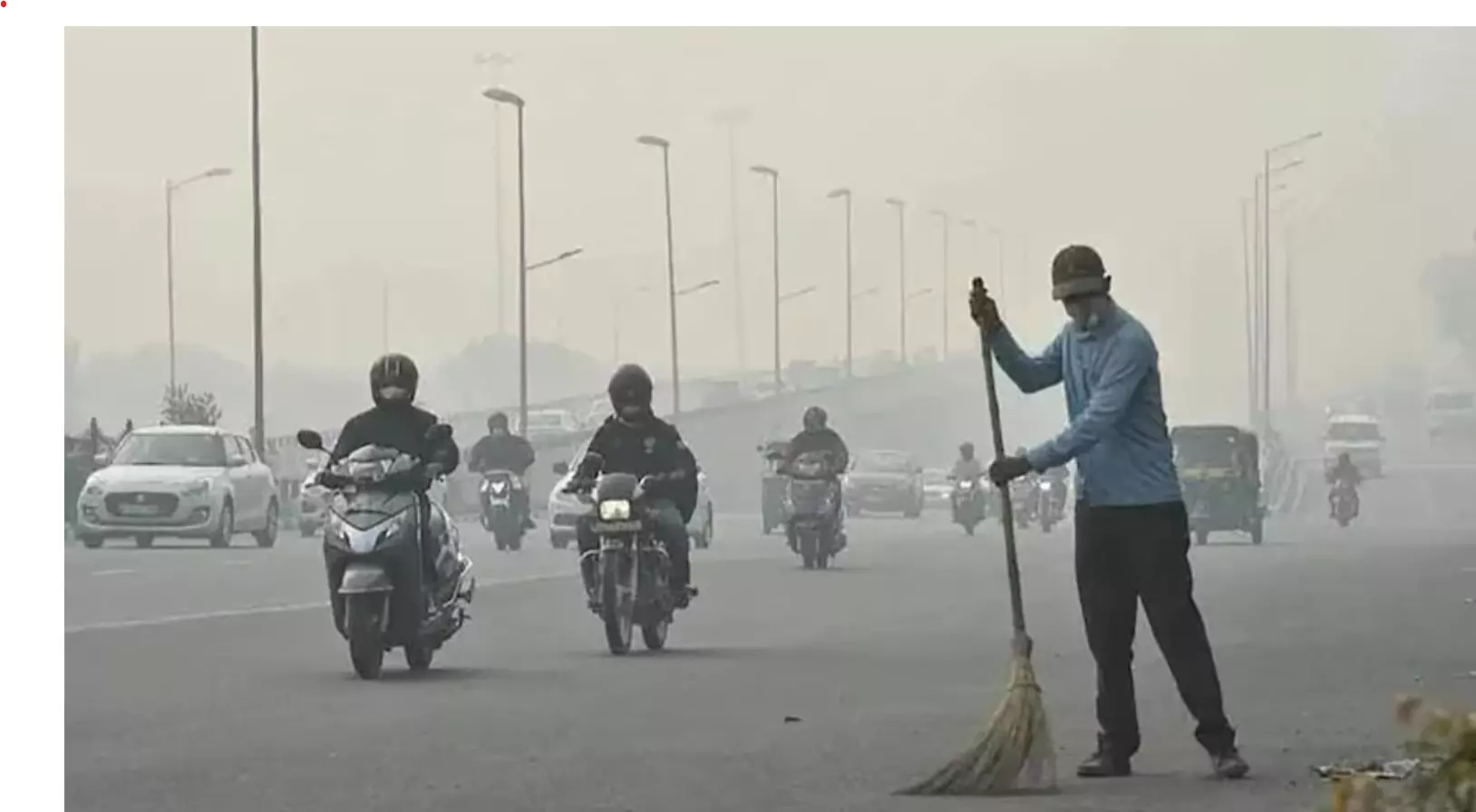Breathing against life!

The residents of the national capital of the fastest growing economy in the world are struggling—like they do every single year—to find fresh air to breathe in. The long march towards growth, the skyscrapers, the expansive factories and malls—all stop making sense when something as basic as fresh air or water becomes elusive. The absence of these basic attributes of life must be seen as an infringement of the fundamental right to life and liberty.
Almost as a repeat telecast, the National Capital Region (NCR) finds itself enveloped in a thick, toxic haze. In fact, the familiar smog, which tends to worsen during winter, has arrived earlier this year, pushing the air quality into the 'very poor' category and raising concerns across the NCR. With respiratory illnesses on the rise, hospitals are witnessing a surge in patients suffering from pollution-related symptoms like coughing, watery eyes, and breathing difficulties. The situation is dire. Delhi’s residents, especially the elderly and children, are the most vulnerable to this toxic air. The pollution is acting as a slow poison, especially for children in their developmental stages and senior citizens with compromised health. Long-term exposure to particulate matter and nitrogen dioxide has been linked to serious health conditions like heart disease, respiratory problems, and cognitive decline, making it explicitly clear that this issue is far more dangerous than just a seasonal inconvenience.
Unfortunately, when one talks of repetition, it is not just the dangerous trend of air pollution that keeps repeating itself year after year, but also the mutual mudslinging among political parties and other stakeholders. The recurring problem, rather than receiving its due solution over the course of time, has become a spectator of bitter political exchanges that would lead Delhiites nowhere. Political parties and concerned authorities seem to have found a pattern through which they can pass the storm each year, without having to initiate something concrete on the ground. Caught in this political crossfire are the millions of residents of Delhi, who continue to breathe in toxic air while their leaders engage in finger-pointing. Measures such as the Graded Response Action Plan (GRAP), designed to trigger emergency interventions when pollution levels spike, have proven to be reactive rather than proactive. Steps like water sprinkling, mechanical road sweeping, and bans on diesel generators are important, but they, too, offer only temporary relief. The deeper, systemic causes of Delhi’s pollution crisis remain largely unaddressed.
What is clear is that Delhi cannot afford to rely on short-term fixes any longer. The city has seen some progress in certain areas, such as the conversion of its public transport to cleaner CNG and the banning of harmful fuels, but these efforts are far from enough. The government’s recently launched Winter Action Plan, which includes innovative measures like drone monitoring of pollution hotspots and a targeted anti-dust campaign, is a step in the right direction. However, these measures need to be part of a larger, more sustained effort to curb pollution at its source. Strong enforcement of existing regulations and more stringent controls on vehicular emissions, industrial waste, and crop burning are urgently needed. At the same time, residents also have a role to play. While many people are now using air purifiers and wearing masks, individual actions are not enough to tackle the scale of this crisis. A more collective approach is needed—one that includes reducing the use of private vehicles, increasing reliance on public transport, and planting trees to absorb pollutants. These small but essential steps, when taken collectively, will certainly make a significant impact.
Delhi’s pollution crisis has become an annual catastrophe, but it doesn’t have to be this way. The city’s residents deserve clean air, and achieving that requires more than just emergency responses or political blame games. It requires a united effort from all stakeholders—government, industry, and the public—to take long-term, sustainable actions. Only then will Delhi begin to recover from the toxic air that has plagued it for far too long. If authorities continue to wait, the price will be paid with the health and lives of the city’s people.



